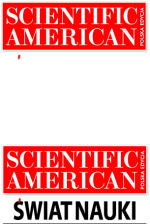 2006
2006
 2008
2008
 2010
2010
 2012
2012
 2014
2014



 |
Heat of Silesian heaps
‘Thermal alteration of the Silesian coal waste dumps. Basic and experimental study’
Justyna Ciesielczuk – author of photograph and project manager Burning heap |

|
Description popularizing the research project
Heaps do not always burn with blazing fire, with flames flickering on their tops. Very often, it is only the smoke floating over the heap that local residents observe carefully. Yet there is no smoke without fire. Smouldering slopes of the post-mining tips mean that deep inside there is a fire. Under the surface, among the mined rocks and coal, the temperature increases. Sometimes the temperature may be so high that it leads to self-ignition. Then the temperature may reach even unbelievable 1000 degrees Celsius. In such conditions the rocks roast, melt and transform, and all the alchemical concoction emits gases which get to the surface in form of gray smug of smoke. Just like in laboratories of medieval experimenters where the effect of their hermetic practices was unlike the ingredients used, inside the heaps the ingredients roast and turn into a new rock of different properties than the mined rocks of the heap. The heat inside the heap is only one of links of a chain of phenomena occurring underground. Each fire, even the one called self-ignition, has its cause and result. The cause may be various: composition of the rocks forming the heap, local climate conditions, age and other factors, which can initiate heating the heap and start a fire. Results are also uncertain. They may concern properties of the transformed rocks, possibilities of reclaiming the heap, or health of the people observing the smoldering heaps with concern. Climate scientists have been warning against global warming for a few decades, emphasizing how many causes and results of the phenomenon are still unknown. In Upper Silesia, where almost every city has its own heap, local warming is more of a concern. Local warming which means underground fires melting snow on the heaps even in snowiest winters.
Abstract
Coal wastes deposited on the dumps can be affected by self-heating of the coal matter that causes self-ignition of the wastes. High temperatures generated during dumps’ fires cause the burn up of the coal matter dispersed within the wastes, overproduction of HCl, HF, NH3, CO and CO2, which are harmful for natural environment. Self-heating, self-ignition and coal waste burn processes are slow, long-term, harmfully affecting the air and underground waters. The aim of the project is to investigate mineral and geochemical composition of the waste rocks deposited on the coal waste dumps affected by pyrometamorphism.
Patronat honorowy
Leszek Jodliński
Dyrektor Muzeum Śląskiego w Katowicach
Zygmunt Łukaszczyk
Wojewoda Śląski
Jan Malicki
Biblioteka Śląska
Piotr Uszok
Prezydent Katowic
Adam Matusiewicz
Marszałek Województwa Śląskiego














